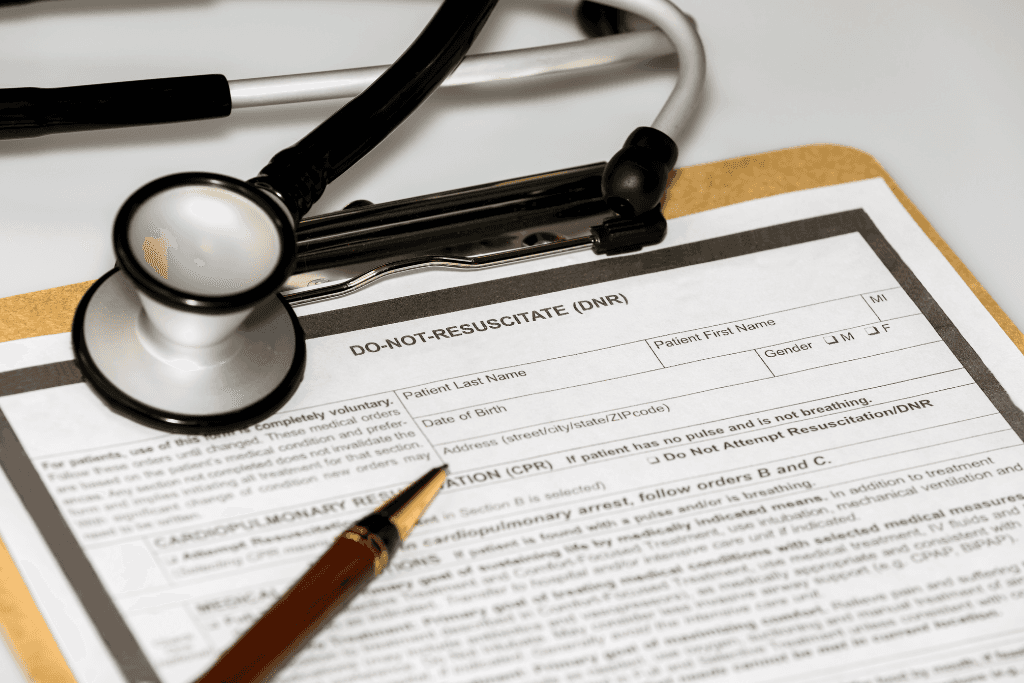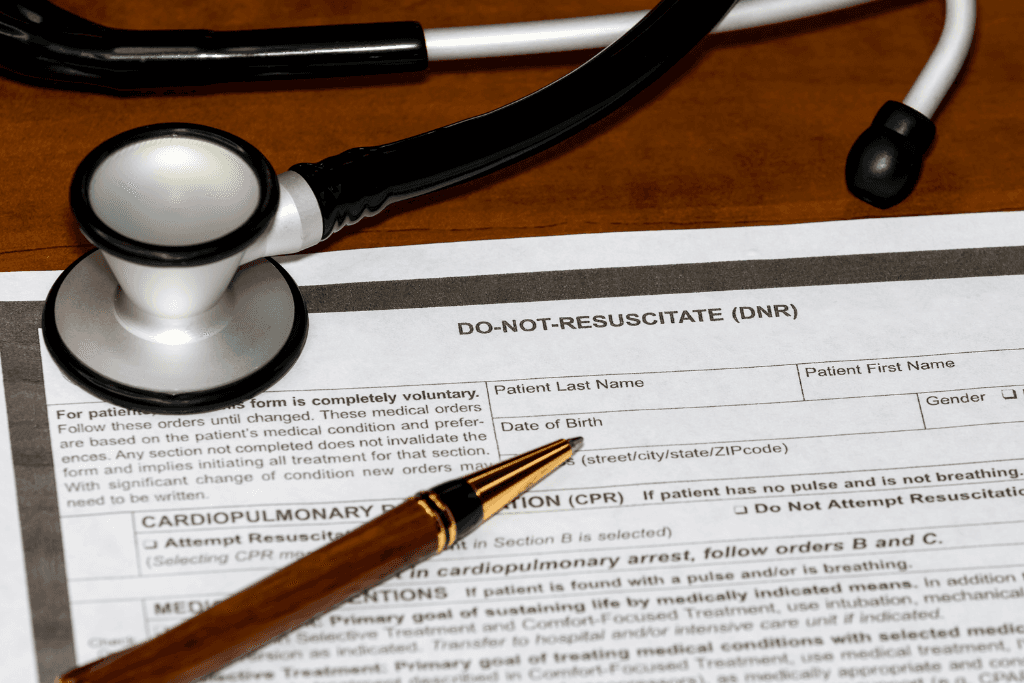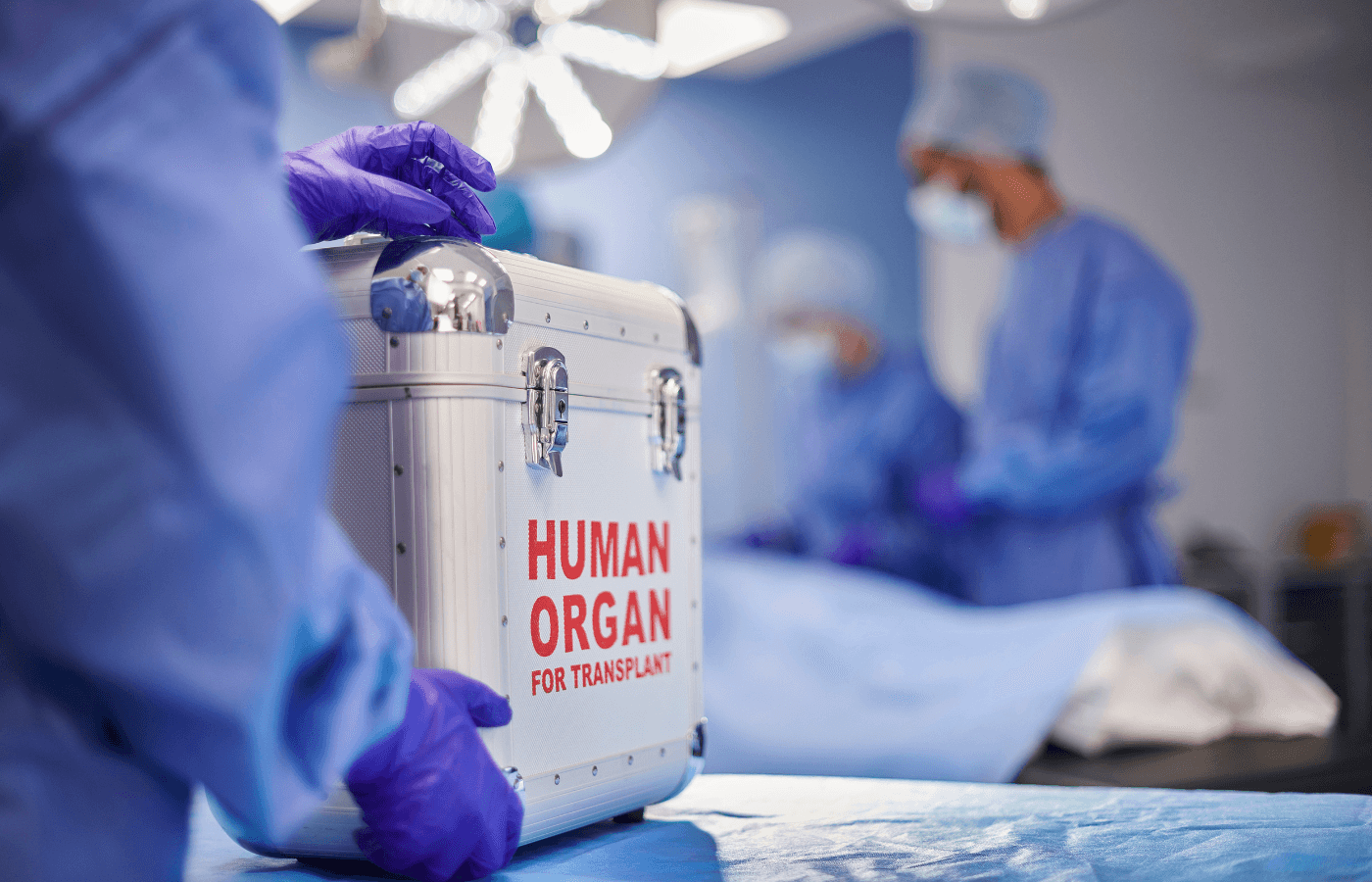Are you contemplating a do-not-resuscitate Order (DNR)? Getting a DNR is a big decision that should not be taken lightly, as this order will prevent you from receiving life-saving treatment should the time come.
We’lll explain what a DNR entails, who needs one, and the steps to create a valid DNR.
Key Takeaways
A DNR specifically refers to cardiopulmonary resuscitation (CPR) and not other treatments like painkillers and antibiotics.
Each state has its legal aspects of a DNR you must be aware of to ensure your DNR is valid.
You can update or revoke your DNR at any time.
Understanding Do-Not-Resuscitate Orders

Before deciding to create a DNR, you must clearly understand what this means to avoid any complications or miscommunication about your end-of-life wishes.
A DNR is an end-of-life medical directive that instructs all healthcare providers and emergency staff taking care of you to withhold life-sustaining treatment, especially if you are not in the position to communicate.
It’s important not to confuse a DNR with an advanced directive or a medical power of attorney.
John Strohmeyer, attorney at Strohmeyer Law PLLC in Houston, Texas, reminds patients that a DNR is “not a medical power of attorney where you’re going to appoint an agent to make medical decisions for you, and it’s not an advance directive to physicians.”
A DNR specifically refers to cardiopulmonary resuscitation (CPR) and other other resuscitation methods like:
Cardiac compression (or chest compressions)
Artificial ventilation (mouth-to-mouth breathing)
Defibrillation (electrical shock)
Intubation (involving a respiratory tube)
On your DNR form, you may also find that depending on your location, a DNR may go by other names such as:
DNAR (do not attempt resuscitation)
MOLST (medical orders for life-sustaining treatment)
AND (allow natural death)
POLST (physician orders for life-sustaining treatment)
A DNR does not apply to other treatments, such as pain relievers and antibiotics, because you are still entitled to palliative care.
In summary, your DNR will hold your CPR preferences and is a legal, binding document that your healthcare providers must follow.
When to Consider a DNR
Deciding to create a DNR is a big decision. So, how do you know when to consider getting one?
Generally, the time to consider getting a DNR is when your medical condition has progressed to the terminal stage, or you are reaching old age. Many terminal patients or those with chronic pain choose to avoid life-saving treatments that often can be aggressive and prefer to let nature take its course.
Other medical scenarios that can benefit from having a DNR include:
Patients who are permanently unconscious
Patients with severe dementia
Situations where resuscitation efforts would be futile
When the effects of CPR would leave the patient in a worse condition
That last point is why many people choose to have a DNR. Aggressive, life-saving treatments can leave patients with painful injuries like broken ribs from CPR or brain damage, and they can be a traumatic experience for the patient and the family.
In fact, Louise Sharpe, professor of clinical psychology at the University of Sydney in Sydney, Australia, reveals:
“Research shows that terminally ill patients who receive mechanical ventilation are less likely to survive the admission.”
It is important to be aware that physicians are not obligated to approve a DNR request if they do not believe it is appropriate in their professional capacity. If this happens to you, your healthcare provider will likely transfer your care to another physician who will approve your DNR request. However, the likelihood of this happening is very low.
Benefits of Having a DNR Order

Family members and close friends of someone who has created a DNR order may not fully understand why anyone would not want life-saving treatment, but there are a number of benefits that come with having a DNR.
Respect the patient’s end-of-life wishes: Having a DNR allows the patient to have more control over their medical decisions and body, especially when illnesses can take that away.
Reduces healthcare costs: The sad reality of healthcare in the U.S. is that many people are in debt because of medical costs. For some, having a DNR can reduce those costs and bring a level of financial peace. Receiving treatment while worrying how you’re going to pay for it can be a very stressful situation.
Enhances comfort: Having a DNR order can help improve the patients quality of life by avoiding any unnecessary pain from last-chance medical treatments and interventions.
Promotes natural death: By not having aggressive life-saving treatments, patients can pass away peacefully in their own time, surrounded by their loved ones.
Helps family decision-making: Having a DNR can help ease the burden of family members having to make difficult decisions about their care during a crisis. This stress is removed completely.
Legal Aspects of a DNR Order
While deciding to create a DNR order is relatively easy, it’s important to find out what the legal requirements are in your state to ensure its validity.
One of the most important requirements you need to pay attention to is the signing requirements. Some states will require the signatures of the patient and the physician, while others may require an additional two witnesses or require that the form be notarized. Not following your state’s instructions can result in an invalid DNR.
Remember, what may be valid in one state may not be in another. If you are planning on traveling to a different state, you may need to create a new DNR.
You should also be aware that some states have portable DNR orders while others don’t. A portable DNR means that it can be applied to different healthcare settings, like hospitals to hospices, without having to create a new one for each setting.
There are also in-hospital DNRs and out-of-hospital DNRs to consider as well. If your state offers out-of-hospital DNRs, this means that first responders legally cannot perform CPR. However, if you only have an in-hospital DNR and receive life-saving treatment outside of the hospital, legally, there is nothing you can do about it.
Some states require that you have your DNR form with you, while others, like Texas, allow patients to wear medical jewelry like bracelets or necklaces instead of carrying their DNR forms.
So, you can see why it’s so important to understand the legal aspects of a DNR according to the state that you live in. Keep track of your state’s requirements and documents with Trustworthy. Trustworthy is an award-winning Family Operating System® to manage all your estate planning in one secure location.
Trustworthy can connect you and your family members with a local Trustworthy Certified Expert™ to help you manage your end-of-life planning like your DNR.
How to Obtain and Complete a DNR Form
Once you have made your decision to get a DNR there are some things you must do first to complete it.
Obtain the DNR forms: There are plenty of ways to obtain a DNR form for free. You can get them from your healthcare providers or hospices. They can be downloaded for free from websites like eforms.com and your local government’s website.
Consult with your healthcare provider: You will need to consult with your healthcare provider to discuss the realities of obtaining your DNR. You can also use this time to obtain the form.
Fill out your personal information: You will need to complete your personal information on the form. This will include your full name, address and your date of birth. You need to make sure this information is correct. Otherwise, your DNR won’t be valid.
Indicate your CPR wishes: On the form, you will be given the opportunity to indicate your resuscitation wishes. Some forms will provide options for the refusal of CPR, mechanical ventilation, defibrillation, and others. Be clear about your wishes.
Inform your healthcare proxy: If you have appointed a medical power of attorney, you will need to discuss your DNR wishes with them so they can communicate this should you be incapacitated.
Sign the DNR form: Sign the DNR form according to the requirements of the state that you live in
Share copies: Once you complete the DNR form, your healthcare provider will generally distribute this information to other medical providers and make a note on your medical record.
How to File a DNR Order

After completing the DNR form, you now need to file your DNR so that everyone is aware of your end-of-life wishes.
Complete the DNR form: When filling in the DNR, include your full name, address, date of birth, a description of your medical condition, and your CPR preferences.
Sign the DNR form: Once you fill out your details, you must sign the form with the current date.
Obtain physician signatures: You will need to obtain your physician’s signature and others, depending on your state’s requirements, in order for your DNR to be valid.
Obtain signatures from witnesses: This may only be relative if your state requires it. For example, you may be required to get signatures from two witnesses who are not the hospital's employees. You might also have to get your DNR notarized to be considered valid.
Share copies of your DNR: After signing your DNR, it’s important that you share this information with your healthcare providers and close family members.
Register your DNR form: Some states have a registry where you can file your DNR so that it will be available immediately to first responders and your medical record.
Discussing DNR Wishes with Family and Healthcare Providers
Now that you’ve created your DNR, it’s important to share this information with your family and healthcare providers.
You’ve likely discussed your DNR wishes with your healthcare provider during the decision and signing process. During this time, they probably highlighted all the possible risks and benefits of this decision. They likely ensured you understand the decision and are not being pressured into it.
Discussing your DNR wishes with your family is a lot harder than talking with your healthcare provider, but it is important to do it as soon as possible and before a crisis.
A good idea is to approach the conversation in a calm environment where everyone is seated. Be clear and direct about your intentions. Explain why you feel this way and what you wish to avoid by having a DNR. Your family is bound to have questions and when they do, answer them without getting defensive.
This is a hard conversation to have, and your family members may not accept your decision. If you know that your family members may have a problem with your decision, it may be a good idea to bring in your healthcare provider to the conversation so that they can answer any questions or concerns.
Having a documented copy of your conversation with healthcare providers and your loved ones in writing is a good way of avoiding any miscommunication or confusion. You can store this document with Trustworthy and create a trusted network of people who have access to information at all times in case of an emergency regardless of their location.
Keeping Your DNR Order Secure

It is highly recommended that you keep your DNR somewhere that is safe but still easily accessible in the case of an emergency.
If you’re keeping your DNR form at home, a good idea is to keep a note on your refrigerator door that will tell first responders that you have a DNR. Anywhere in plain sight is recommended.
The problem with storing physical papers is they can easily be lost or destroyed. Take advantage of secure digital storage solutions like Trustworthy. With 256-bit AES encryption, two-factor authentication, and HIPAA and SOC 3 compliance, Trustworthy ensures your medical information is protected. Think of Trustworthy as your digital safety box.
How to Update or Revoke a DNR Order
You can update or revoke your DNR at any time. Just be sure you have informed all the relevant people as soon as possible.
Generally, some reasons why you may need to update your DNR are if you want to add new CPR preferences, your medical condition has changed, or you have moved to a new state, and your DNR is now invalid. The process is really simple: you’ll need to create a new DNR following the provided steps in this guide.
How to Ensure Your DNR Order Is Honored
You’ve done all the work, and now you need to ensure that your DNR is honored. There are a number of ways you can do this.
First, you should ensure you have some form of DNR ID. This could be a DNR card, your form, or medical jewelry like bracelets and necklaces. You should also inform your loved ones about your decisions in case you are unable to talk.
Make sure that your healthcare provider has updated your medical record to reflect your DNR and spread this information to other healthcare providers.
Frequently Asked Questions
What information do I need to provide to get a DNR order?
You will need to provide your full name, address, medical details, and CPR preferences.
Is a DNR order valid across different states or countries?
No, some states may have their own DNR requirements and what may be valid in one state won’t be in another.
What are the potential consequences of having a DNR order?
One potential consequence of a DNR order is that patients have a higher mortality rate.
We’d love to hear from you! Feel free to email us with any questions, comments, or suggestions for future article topics.
Trustworthy is an online service providing legal forms and information. We are not a law firm and do not provide legal advice.














